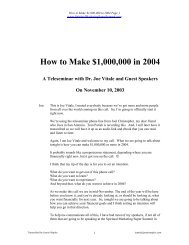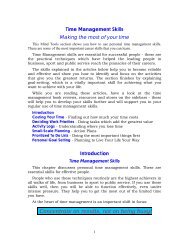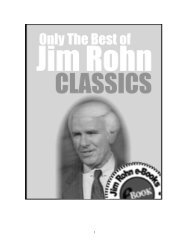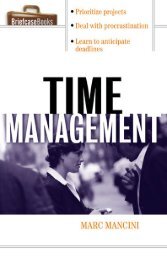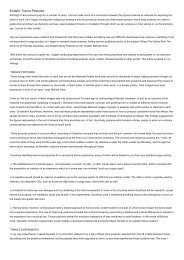Executive Coaching - A Guide For The HR Professional.pdf
Executive Coaching - A Guide For The HR Professional.pdf
Executive Coaching - A Guide For The HR Professional.pdf
Create successful ePaper yourself
Turn your PDF publications into a flip-book with our unique Google optimized e-Paper software.
10 EXECUTIVE COACHING<br />
...........................<br />
<strong>Coaching</strong> to improve organizational performance and to help<br />
bring out an executive’s potential have also gone through a history<br />
of increased acceptance. <strong>The</strong>re is no clear starting point for the<br />
use of coaching for executives, but according to some views coaching<br />
has been going on for fifty years or so under the labels of<br />
consulting or counseling. Most people agree, however, that it wasn’t<br />
a common practice until the late 1980s or early 1990s; since that<br />
time it has generally been known as coaching.<br />
In the earlier years coaching often was triggered when it became<br />
apparent that an executive was missing a specific skill, for example,<br />
not being able to speak effectively on television or to large groups,<br />
or in preparation for an overseas assignment. Often the reason to<br />
bring in a coach had to do with interpersonal issues, or possibly<br />
there were concerns of a “personal” nature having to do with<br />
health, career, or family matters. <strong>The</strong>se situations typically had an<br />
aura of secrecy about them because of a desire not to let anyone<br />
know that a coach was being used.<br />
Driving <strong>For</strong>ces Behind Organizational Change<br />
Since the mid-1990s the world of work has changed drastically. <strong>The</strong><br />
same forces that are changing our lives in organizations are driving<br />
the greater use of coaching (see Table 1.1). <strong>The</strong> demands placed on<br />
organizational leadership in the new business environment have<br />
expanded greatly.<br />
Corporations have grown lean and have lost pools of talent in<br />
the downsizing efforts. Those left in charge often did not have the<br />
years of experience needed to inform their decision making.<br />
<strong>The</strong> pace of change in organizations had accelerated and a premium<br />
was put on speed. This meant there was precious little time for consensus<br />
building or intelligence gathering, and so the risk of errors<br />
by a leader or leadership team increased. <strong>Coaching</strong> emerged as the<br />
preferred “just in time” learning to help leverage the areas that<br />
would have the greatest impact on results.






